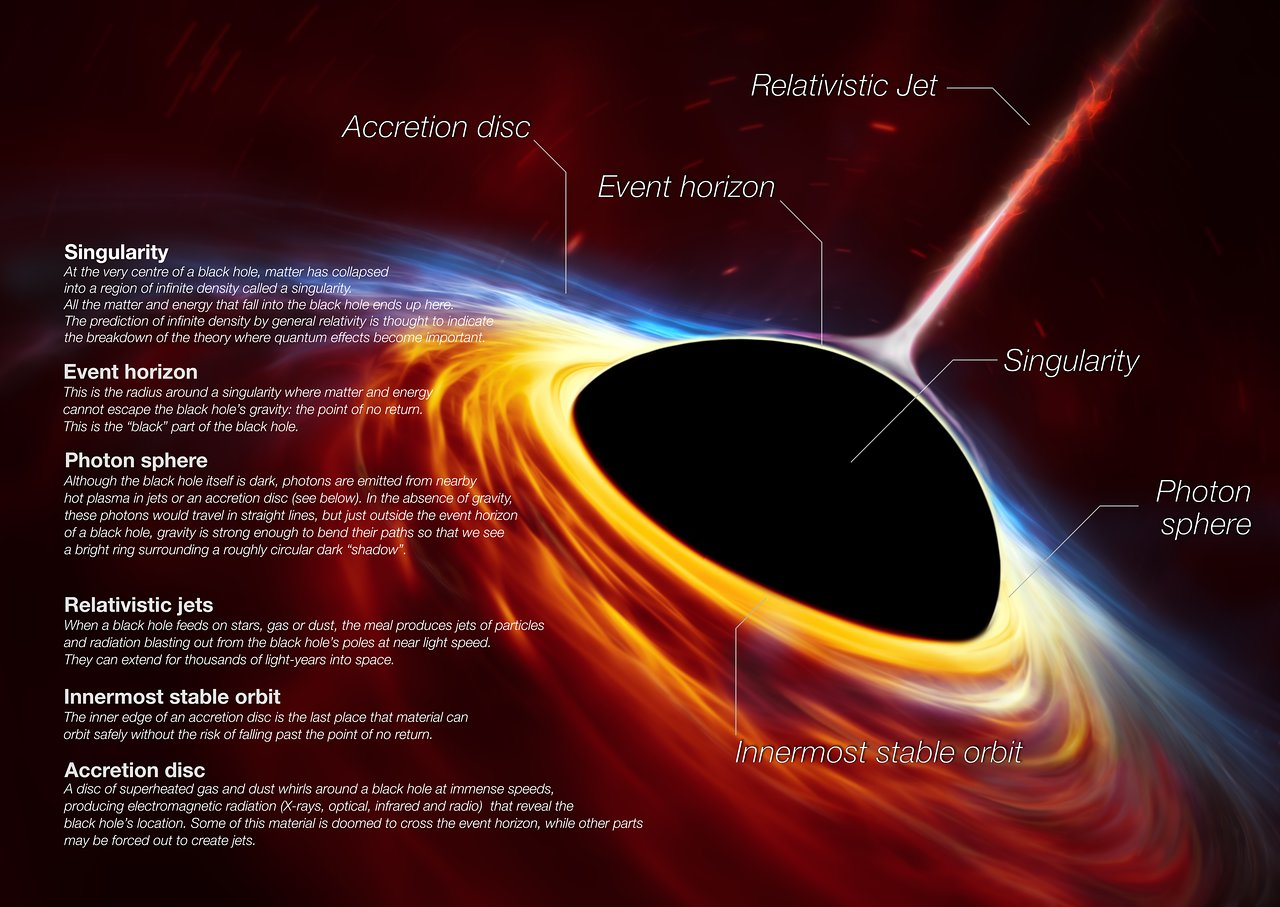Black Hole Triple System | 16 Nov 2024
Why in News?
A recent study has discovered the first black hole triple system, located 8,000 light years (LY) away ( LY is the distance light travels in a year, approx 5.9 trillion miles (9.5 trillion km), differing from typical black holes , usually found as isolated entities or in binary systems.
What is a Black Hole Triple System?
- About: A black hole triple system consists of a central black hole and two orbiting stars, bound together by gravitational forces.
- It forms through a "direct collapse" process, where a massive star collapses inward without undergoing a supernova explosion, enabling nearby stars to remain gravitationally attached.
- The process of direct collapse, also termed a "failed supernova", creates a gentler formation mechanism, avoiding the violent ejection of surrounding matter.
- This unique structure challenges traditional models of black hole formation and demonstrates the complex gravitational dynamics that can exist in stellar systems.
|
Difference Between a Black Hole and a Black Hole Triple System |
||
|
Feature |
Black Hole |
Black Hole Triple System |
|
Components |
A singular black hole. |
One central black hole (V404 Cygni) and two stars. |
|
Orbital Details |
No other celestial body is necessarily bound to the black hole. |
- One star orbits every 6.5 days. - Another star orbits every 70,000 years. |
|
Location |
Found across the universe. |
Located about 8,000 light years away in the constellation Cygnus. |
|
Unique Features |
Often found in isolation or binary systems. |
Features gravitationally linked stars in a rare triple configuration. |
|
Behaviour |
May consume nearby matter and emit X-rays. |
The central black hole consumes the nearer star over time. |
|
Scientific Implications |
Supports standard models of black hole formation and stellar evolution. |
Challenges traditional black hole formation theories and provides insights into complex gravitational dynamics. |
|
Discovery Context |
Commonly studied through telescopic data. |
Accidentally discovered while analysing astronomical data of V404 Cygni. |
Black Hole
- A region in space with gravity so strong that no matter or light can escape.Typically forms from the collapse of a massive star in a supernova.
- Types of Black Holes:
- Stellar Black Hole: It is formed by the collapse of a single massive star
- Intermediate Black Hole: Their masses are between 100 and 100,000 times that of the sun.
- Supermassive Black Hole: Their masses ranging from millions to billions of times that of the sun, found at the centres of most galaxies including our own Milky Way galaxy.
UPSC Civil Services Examination, Previous Year Question (PYQ)
Prelims
Q. Consider the following phenomena: (2018)
- Light is affected by gravity.
- The Universe is constantly expanding.
- Matter warps its surrounding space-time.
Which of the above is/are the prediction/predictions of Albert Einstein’s General Theory of Relativity, often discussed in media?
(a) 1 and 2 only
(b) 3 only
(c) 1 and 3 only
(d) 1, 2 and 3
Ans: (d)

